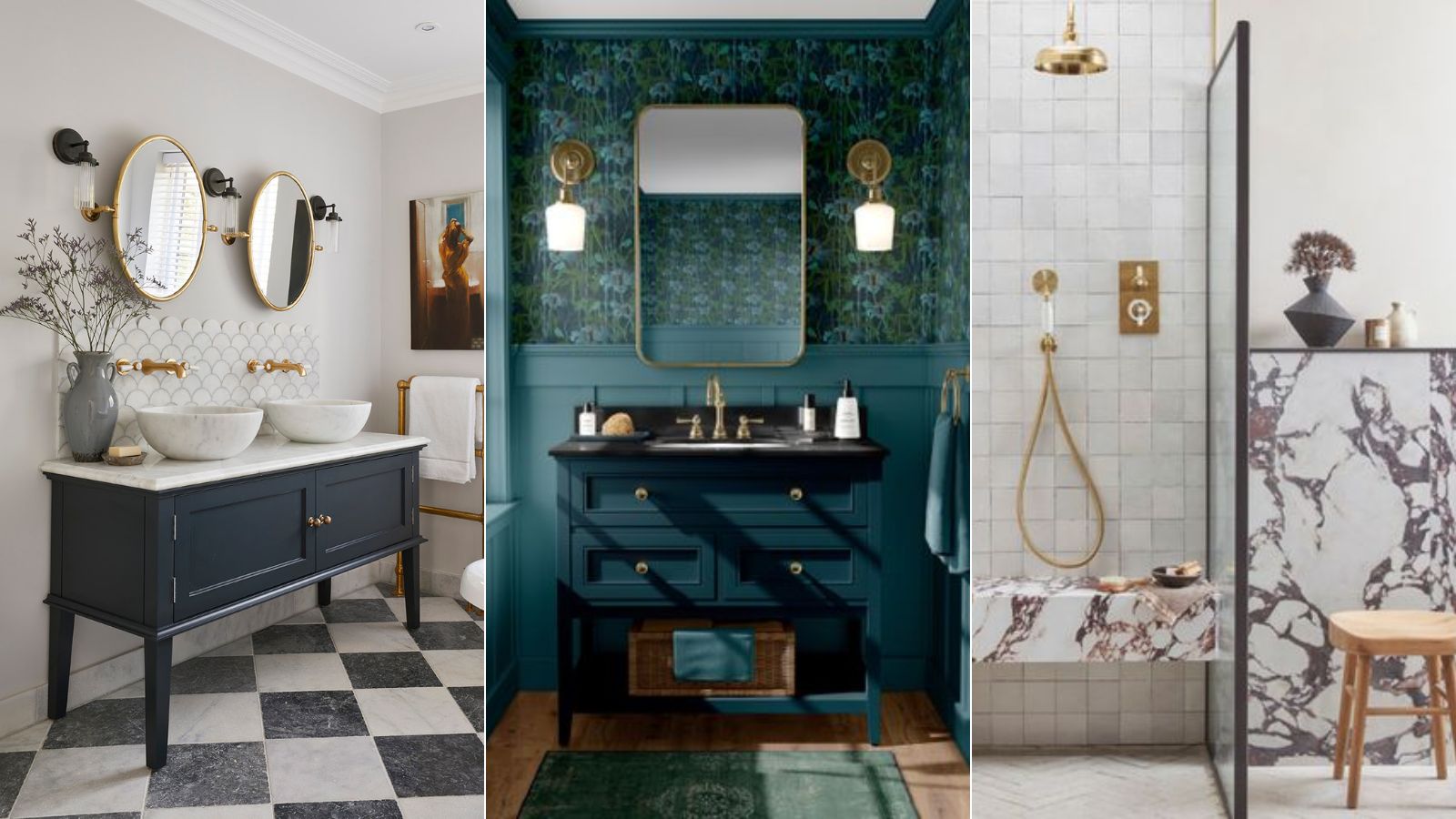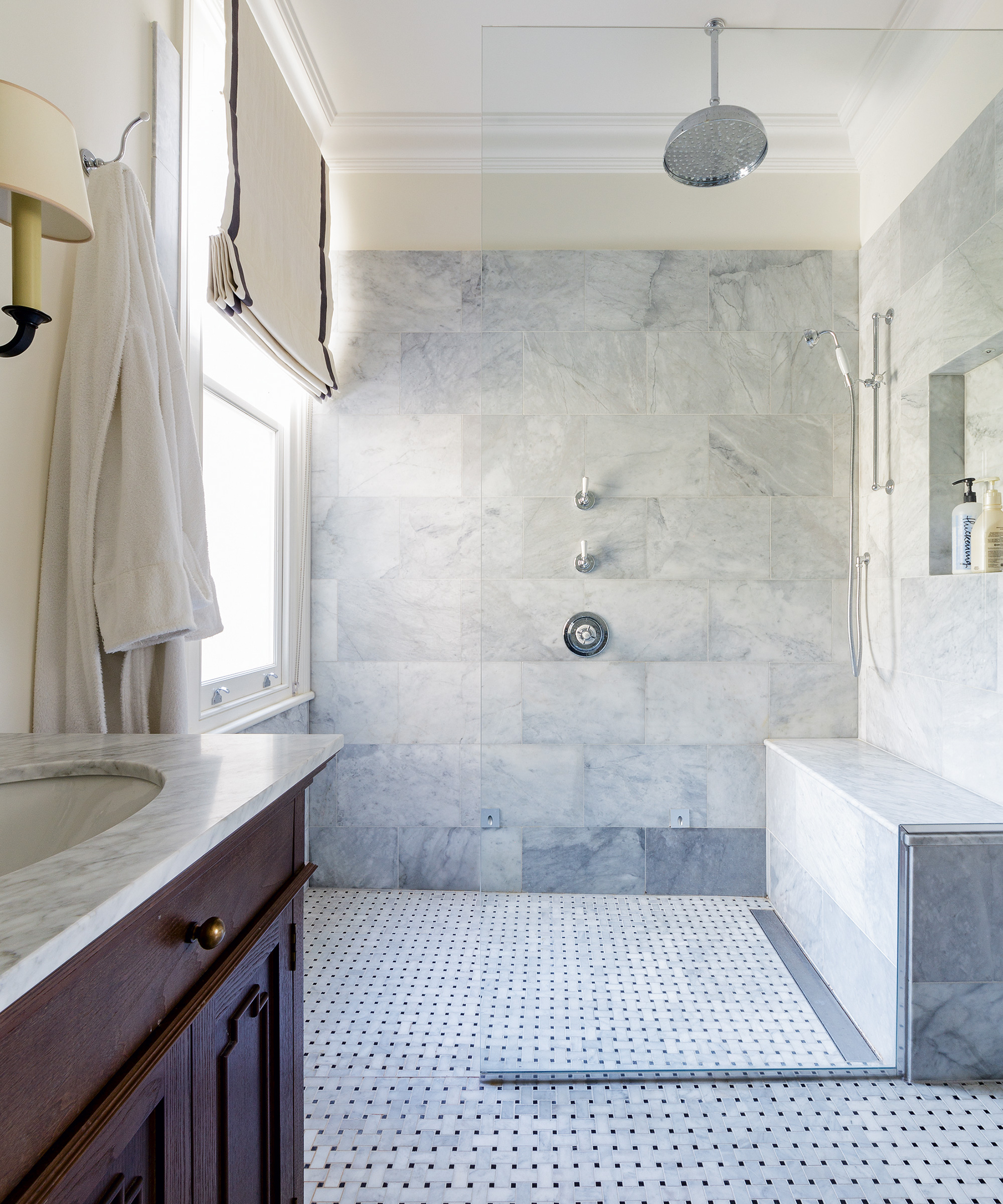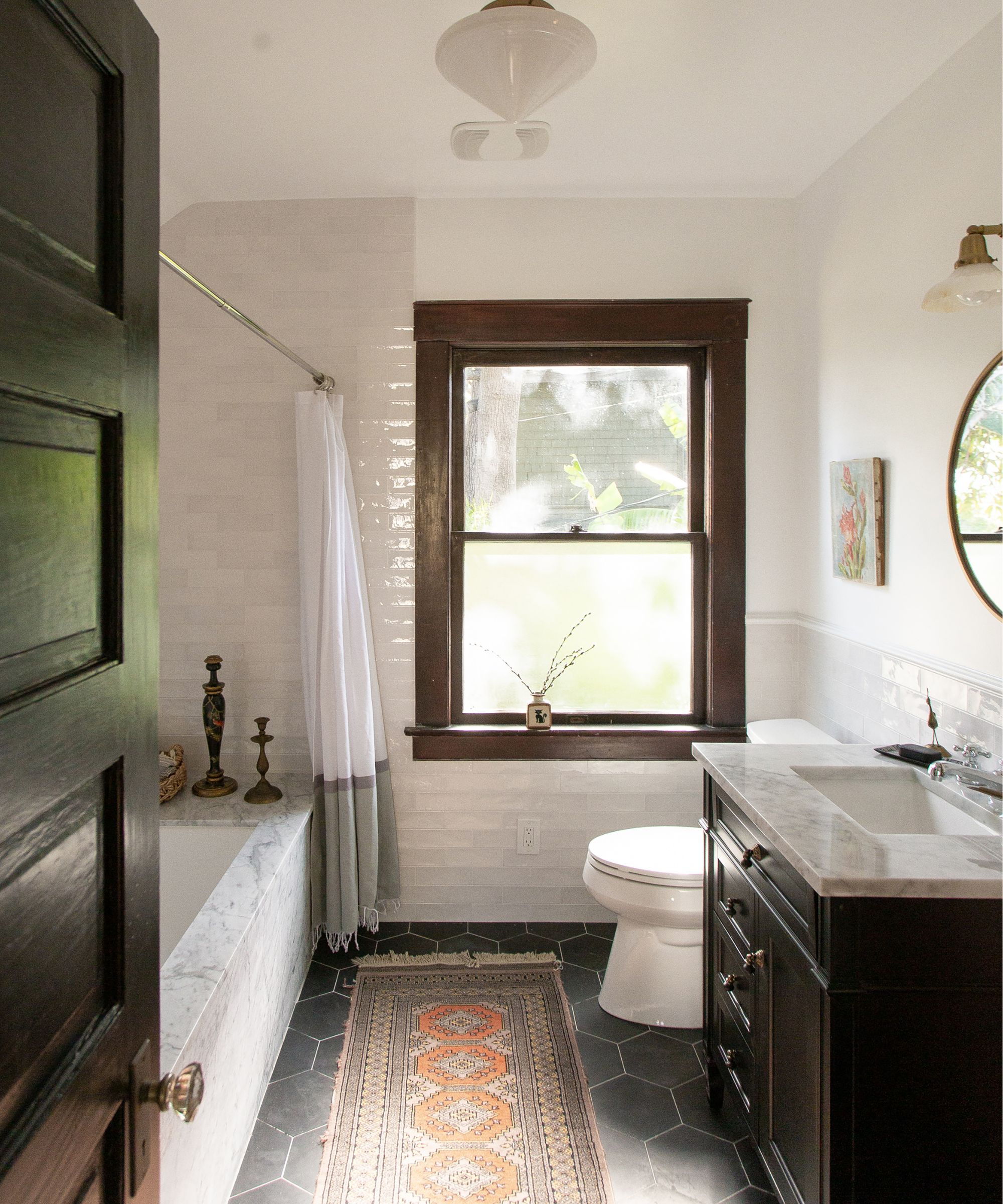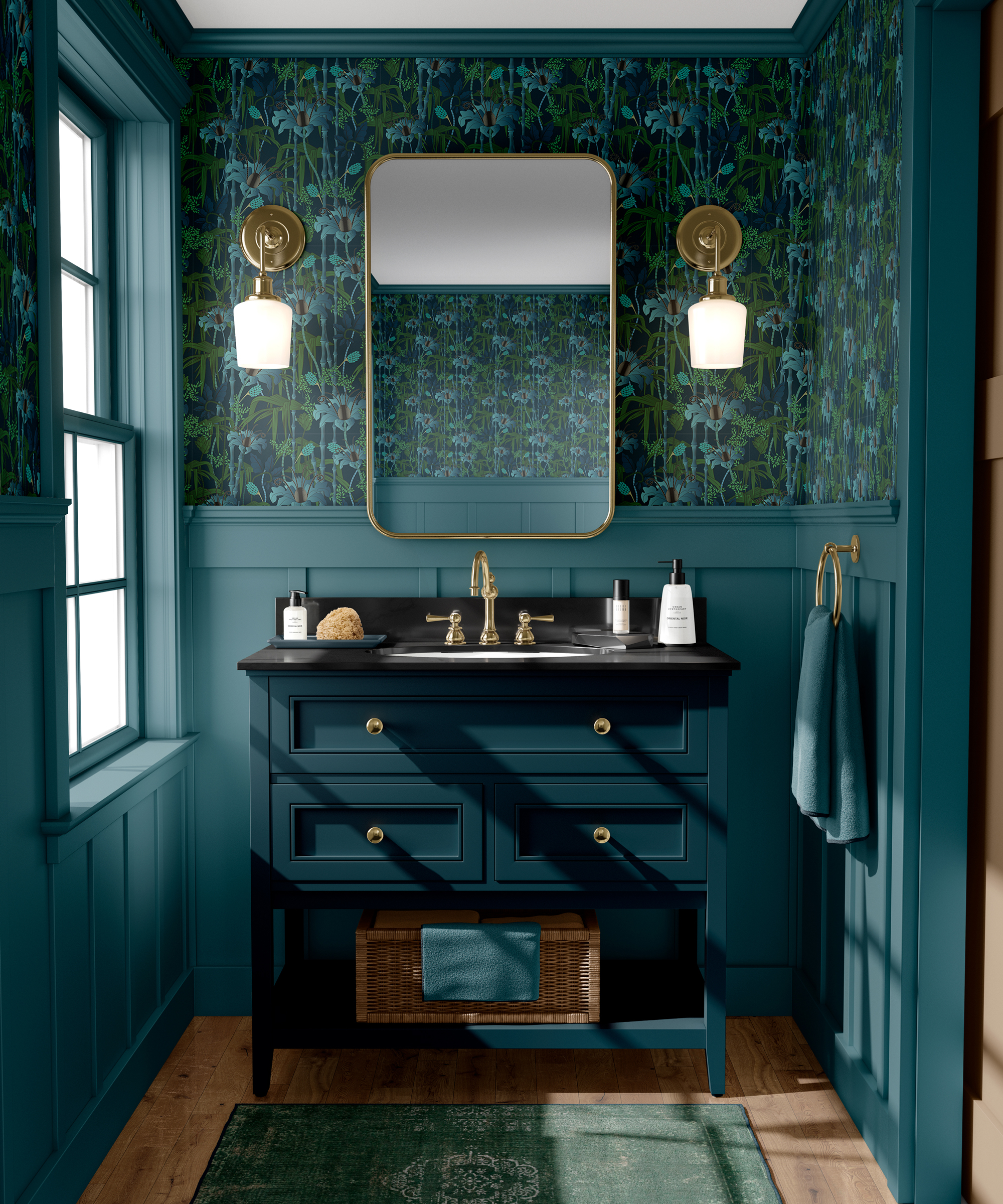
Multi-generational living, where more than one generation lives under the same roof, has risen significantly in recent years, and the bathroom is one space that requires careful consideration to ensure it remains a practical and comfortable space for all.
Each generation may need different features to use this space easily and safely. Therefore, in a multi-generational bathroom, functionality without compromising style is always a top priority.
Our bathroom and interior design experts have shared some practical bathroom design tips and storage ideas for increased accessibility at home, helping you to design a multigenerational bathroom.
Planning a multi-generational bathroom
Elderly family members will require a safe, comfortable, and accessible bathroom, but you might also have to consider the unique needs of children, guests, and those with accessibility challenges.
Here's what to consider:
1. The shower area

It's essential to make the shower easy and convenient for all ages to use.
'A handheld showerhead is convenient for everyone,' says Kenny Klinger, co-founder and CEO of Go Bath. Consider installing one with an adjustable slide bar, making it easier for people of different heights and abilities to shower comfortably.' This can be used alongside a rainfall showerhead.
Additionally, a stylish shower seat – perhaps built into your shower room – can make showering significantly easier for older and younger generations who may find standing for long periods of time uncomfortable. It also provides a convenient place to store showering products within easy reach, meaning you don't have to bend to reach them or keep them in a shower caddy which could act as a tripping hazard.
Opt for slip-resistant flooring to enhance safety.
There are plenty of anti-slip shower trays available online or in stores. 'Mosaic and smaller tiles for shower floors are also a great choice, as the additional grout helps to provide plenty of grip,' explains Barrie Cutchie, design director at BC Design.
'The overall design of a bathroom is a personal choice, but for multi-generational living, a wet room can be a great solution,' continues Barrie Cutchie. 'There are no shower trays with a ‘lip’ to trip on, so these spaces can be safer for older family members.'
Wet rooms should be used with tactically placed tiles and glass to ensure minimal water spills out to the rest of the bathroom, which can be a slipping hazard.
If the shower is in a corner, a sliding or folding door may be the most effective way to maximize space.
'While a powerful shower head might be great for waking you up in the morning, it might not suit all users, especially the young and old. Instead, choose shower heads that allow you to alter the intensity of the water jet, and even the droplet formation,' advises Barrie Cutchie.
'When it comes to showering, choosing thermostatic fittings is an absolute must as this helps to provide protection against unexpected hot or cold water spikes.
'Finally, consider underfloor heating to quickly dry any additional water that has splashed onto the floor from showering or bathing so that it doesn’t become an additional hazard.'
2. The bath area

Baths are a great addition to a bathroom; not only are they relaxing, but they are also ideal for people with accessibility issues who find showering more challenging.
'Choose a wide ledge bath so that it provides somewhere to grip hold of and even potentially rest/sit while entering and exiting the bath,' advises Barrie Cutchie. 'This can help older generations, but it can also double up for parents during bath time.'
'Additionally, if there are lots of people using the same bathroom, it can become overcrowded with items such as shampoo. If you are planning your bathroom, consider having a recessed shelf built close to your bath (or shower) to keep items close at hand without having to reach over the bath to grab them.
'Walk-in tubs and level-entrance baths are helpful for older people who have difficulty with mobility and for younger family members as well,' recommends Barrie Cutchie. 'Alternatively, you could consider how to integrate steps to your bath to make accessing it easier and safer.'
3. The sink area

Choose a sink with knee space underneath to accommodate individuals who may need to use a wheelchair or a seated position and for kids to reach it easily.
Motion-sensitive faucets can be helpful for those who find reaching or tuning on taps challenging. 'Lever faucets are also a great choice, as they are easier for all ages to operate, especially those with limited hand strength or dexterity,' says Josh Mitchell, plumbing technician at Plumbing Lab.
'Vanity units are also a fantastic option for multi-generational bathrooms, and it helps to provide ample storage for additional products and towels, as well as creating extra room around the sink area for items people might need access to while using the bathroom,' says Barrie Cutchie.
'If the height of your bathroom vanity is an issue for small children, you can invest in under-mounted step-ups fitted to the underside of the unit. These can then be pulled out to help when a young child needs to brush their teeth.'
Consider a pedestal sink or an open vanity for easy access.
The type of sink you choose will help you to determine the best place for accessible storage. For example, in some multi-generational households, under-sink storage may be easiest for all to reach, requiring a sink with a storage cabinet beneath, and in others, where space is required under the sink for a stool or wheelchair, a bathroom cabinet with a mirror, such as this Linden medicine cabinet, from Pottery Barn, may be ideal.
4. The toilet

For comfortable access to toilets, consider accessibility bars, such as this Coronado Designer bar, from Walmart. Additionally, you may wish to consider features such as automatic lid lifting and touchless flushing.
Opt for a comfort-height, touchless toilet that's easier for individuals with mobility issues to use. These are roughly two inches taller than standard models, which makes them easier for seniors to navigate while still being suitable for younger users.
5. The lighting

'The importance of bathroom lighting cannot be underestimated in a normal bathroom, let alone one that has to work harder for different generations,' says Barrie Cutchie.
'You’ll want task lighting (normally spotlights) in key areas where visibility is needed – such as the sink, shower, and storage areas – and add in ambient lighting to help create a softer atmosphere for when you or anyone else wants to use the bathroom to relax.
Vanity mirrors with built-in LED lighting can improve visibility and enhance the overall aesthetic appeal of the bathroom. We like this round, frameless backlit bathroom mirror from Wayfair, as it would fit seamlessly into a variety of design schemes.
Finally, smart lighting, such as a waterproof shower light with adjustable color and light intensity settings, can accommodate different types of shower needs with the click of a button. We recommend this BestLuz Waterproof Ceiling Light, from Amazon.
6. The storage

'Multi-generational bathrooms can get crowded with products, so try to create a bathroom storage system that is both functional and adaptable to the varied needs of a multi-generational household. This way, the bathroom remains organized, spacious, and comfortable for everyone,' advises Kenny Klinger.
'It's not necessarily about installing multiple storage units, but rather choosing designs that are efficient, accessible, and can accommodate the diverse needs of all users. Think about incorporating storage at different heights – lower for kids or seated users and higher for adults.
'Finally, custom-built solutions, like recessed cabinets or shower niches, can provide storage without protruding into the room.'
$68.00 – $78.00
These hanging baskets are an easy way to keep accessories at any height for children or adults.
$288.90
This pull-down shelf is designed for kitchens but can be concealed within a bathroom cabinet for accessing items at different height requirements.
$35.99
Perfect for organizing a bathroom vanity, this tiered sink organizer with pull-out drawers is an adaptable storage solution.
'This is all about creating a space that's beautiful and functional for all. Some additional considerations should be wider doorways, a spacious bathroom layout, and lever-style handles that are easier for everyone to use,' says Kenny Klinger.







